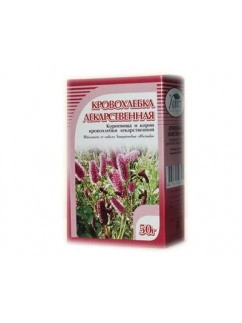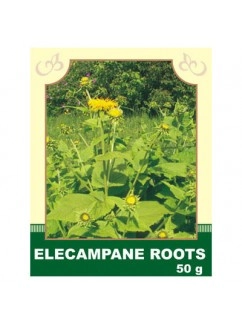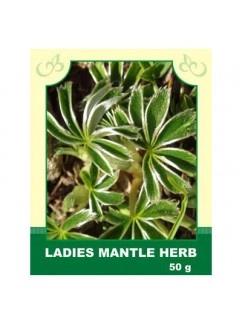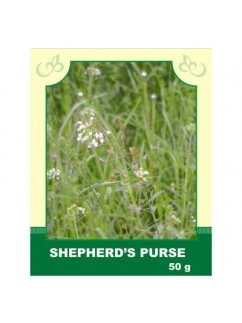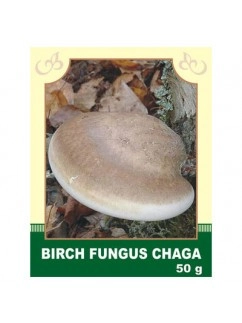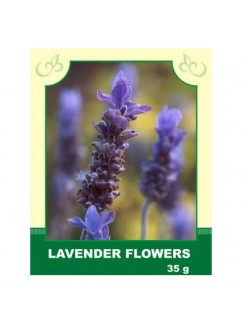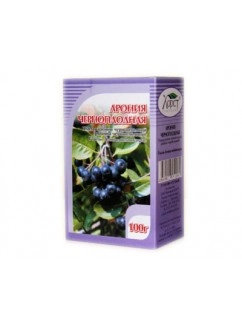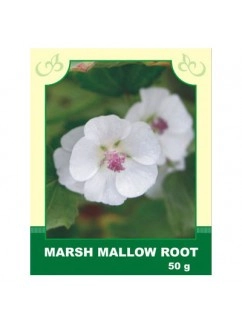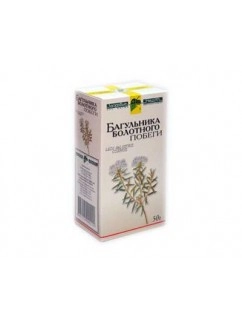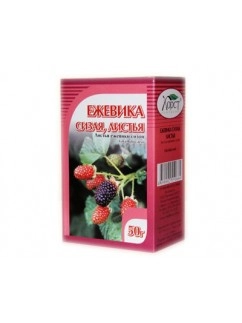Herbs
Orally, it is taken for gastrointestinal and rheumatic diseases; as an expectorant for suffocation, bronchitis; as an anthelmintic, cholagogue, diuretic, and hemostatic.
Method of application and dosage: Finely chopped raw material (20 g) is poured with 200 ml of water, heated on a boiling water bath for 30 minutes, cooled for 10 minutes, strained, and boiled water is added to the original volume. Take 1 tablespoon 3 times a day.
Tincture: 50 g of elecampane roots are infused in 0.5 liters of vodka, infused for 14 days in a dark place. Take 1 tablespoon 3 times a day 30 minutes before meals. This tincture can also be used to rub joints and make warming compresses.
Externally, in the form of baths, it is applied for hemorrhoidal nodes and rectum. It is also used for gargling (in acute and chronic pharyngitis). Finely chopped raw material (50 g) is poured with 100 ml of water, boiled for 20 minutes, and strained. The resulting decoction is mixed with 50 g of vaseline. Used for application to affected areas of the skin (for poorly healing wounds).
Contraindications: individual intolerance, pregnancy, lactation, and for people with kidney and heart diseases.
$6.99Taken internally:
It is used for the treatment of the following conditions:
- Acute and chronic bronchitis;
- Chronic gastritis with secretory insufficiency;
- Colitis;
- Enteritis;
- Diarrhea;
- Edema of renal and cardiac origin;
- Chronic pyelonephritis;
- Cystitis;
- Internal bleeding;
- Stomach indigestion;
- Intestinal bloating.
For diabetes, it helps maintain a stable normal blood sugar level without the use of any medicinal drugs.
Method of application and dosage: Infuse 2 teaspoons of dried, crushed herbs in 1 cup of boiling water, let it steep for 4 hours, strain. Take the infusion in amounts of 1/2 cup 2-4 times a day before meals. Consume for 2 months, then take a 10-day break.
External use:
- In gynecology for leucorrhea;
- For nasal congestion;
- For nosebleeds.
Contraindications: Individual intolerance.
$6.99Internally:
Take internally for bleeding, liver and kidney diseases, fractures, metabolic disorders, weak intestinal peristalsis, and pathological menopause.
Method of application and dosage: Infuse 2 tablespoons of the raw material with 200 ml of boiling water, boil in a water bath for 15 minutes, infuse for 45 minutes, strain, squeezing the remaining material. Bring the prepared infusion to the initial volume and take 1 tablespoon 4-5 times a day after meals.
Externally: Use the infusion for local baths, washing, lotions, and compresses for bruises, inflammation of tendons, minor injuries, and skin damage.
Contraindications: Individual intolerance.
$6.99Internal use: Chaga enhances the body's defensive reactions, activates metabolism in brain tissues, reduces arterial and venous pressure, has anti-inflammatory effects not only when taken internally but also when applied externally. It also lowers blood sugar levels. Chaga is used as a general strengthening and anti-inflammatory agent for gastrointestinal diseases. It is also used as a symptomatic remedy for various oncological diseases, in otolaryngology, and in the treatment of psoriasis, eczema, and other skin conditions.
Method of application and dosage: Soak the mushroom in boiling water so that it covers the mushroom completely and let it steep for 4-5 hours. Crush the soaked mushroom and pour it with preheated water to 50 degrees Celsius at a ratio of 1:5, using the water left from the initial soaking. After 48 hours of infusion, strain the liquid, squeeze out the sediment, and dilute the obtained infusion with water to the original volume. Store the infusion in the refrigerator for 3-4 days. Take 1 glass three times a day in small portions and sips 30 minutes before meals (adult dose). The course of treatment is 4-5 months with breaks of 7-10 days.
Contraindications: Individual intolerance. Intravenous administration of glucose and penicillin-3 (a fungus antagonist) is prohibited during Chaga treatment.
$6.99Internally, lavender is taken as a sedative and calming remedy for migraines, neurasthenia, and tachycardia. It is also used as a diuretic and antispasmodic agent. Lavender helps normalize stomach acidity, increases appetite, lowers blood pressure, and promotes the flow of bile.
Method of application and dosage: 20 g of raw material is poured with 400 ml of boiling water, infused until cooled, and strained. It is taken in doses of 1/2 cup 3-4 times a day. Externally, it is used as a rubbing agent for inflammation of the middle ear and as an analgesic for headaches, dislocations, and sprains.
Externally, a tincture of the herb in sunflower oil is used for rubbing into affected areas: 1 part of the raw material is poured with 5 parts of unrefined sunflower or olive oil, infused for 1-2 months.
Contraindications: individual intolerance.
$6.99- It is used in hypertension, atherosclerosis, diseases of the kidneys (glomerulonephritis), diabetes mellitus, hemorrhagic diathesis, kapillyarotoksikozah, radiation sickness. The fruits of chokeberry Aronia have hypotensive action. Aronia strengthens blood vessel walls. The leaves contain substances that improve liver function, promote education and the outflow of bile.$7.99
Internally, it is taken as an expectorant, anti-inflammatory, and enveloping agent for bronchitis and bronchial asthma, gastritis, colitis, stomach ulcers, and duodenal ulcers; for inflammation of the bladder and urinary incontinence.
Method of application and dosage: The infusion is prepared by the cold method: 6-8 g of crushed root are infused in cold water for an hour, strained, and sweetened with sugar or honey. Take 20 g every 2 hours.
External use: used for gargling and lavage in inflammations of the mucous membranes of the mouth, angina, stomatitis, and on the genital organs.
Contraindications: individual intolerance.
$6.99Internally, it is used for headaches and cardiac discomfort, acute and chronic bronchitis, bronchial asthma, whooping cough, and enterocolitis.
Method of application and dosage: To prepare an infusion, take 6 g of water avens, pour 180 ml of boiling water, infuse on a water bath for 15 minutes, cool for 45 minutes, strain. Take 2 tablespoons 3-4 times a day. For a decoction, take 10 g of water avens, pour 200 ml of boiling water, infuse on a water bath for 30 minutes, cool for 10 minutes, strain, bring to 200 ml. Take 2 tablespoons 3 times a day after meals.
Externally, it is used as compresses and rubs for myositis, neuritis, and joint diseases.
Contraindications: Individual intolerance. The plant is poisonous! Overdose during preparation and consumption of the decoction is not allowed! Consult with a specialist before use.
$6.99Blackberry Leaf in Medicine
Blackberry leaf, derived from the popular blackberry plant, has been used for centuries in natural medicine for its numerous health benefits. From treating diarrhea and inflammation to boosting the immune system, blackberry leaf has gained recognition for its medicinal properties.
Anti-Inflammatory Properties
Blackberry leaf is known for its anti-inflammatory properties, making it a popular remedy for treating inflammation in the body. Whether it's joint pain, sore muscles, or digestive issues, blackberry leaf can help alleviate the discomfort associated with inflammation.
Diarrhea Relief
One of the most well-known uses of blackberry leaf is its ability to treat diarrhea. The astringent properties of blackberry leaf can help to reduce the frequency and severity of diarrhea, providing much-needed relief to those suffering from this common ailment.
Immune Boosting
The high content of antioxidants in blackberry leaf makes it a powerful immune-boosting herb. Regular consumption of blackberry leaf tea or supplements can help strengthen the immune system, making the body more resilient to infections and illnesses.
How to Use Blackberry Leaf
Blackberry leaf can be used in a variety of ways, including brewing a soothing tea, creating a tincture, or using it in a topical application for skin conditions. For those interested in reaping the benefits of blackberry leaf, it's important to consult with a healthcare professional to ensure safe and appropriate usage.
Conclusion
Blackberry leaf is a versatile and powerful herb that has been used in traditional medicine for generations. With its anti-inflammatory, diarrhea-relieving, and immune-boosting properties, blackberry leaf is a valuable addition to any natural medicine cabinet.
$7.99


